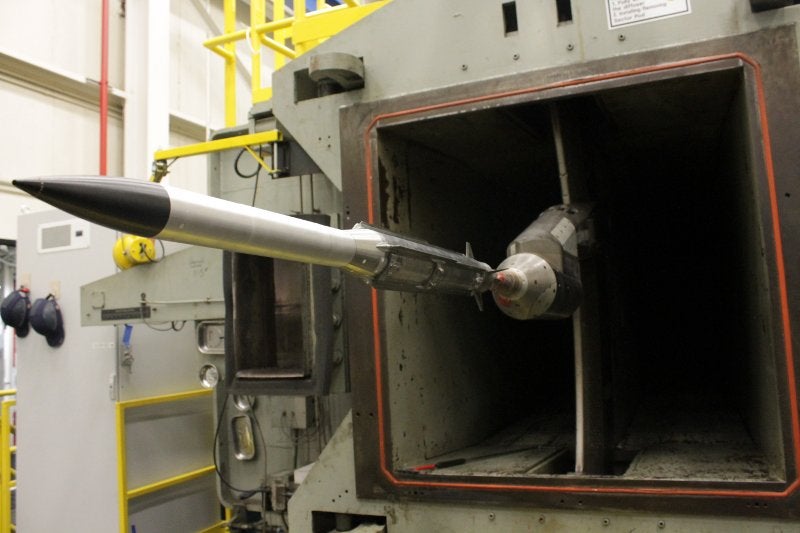
Raytheon has completed wind tunnel testing on the new extended-range (ER) variant of the advanced medium-range air-to-air missile (AMRAAM).
Over 1,700 rigorous wind tunnel tests were conducted on the ground-launched AMRAAM-ER missile so far.
Completion of the wind tunnel testing marks a huge step forward for the missile’s qualification for integration with the national advanced surface-to-air missile system (NASAMS) launcher.
It also moves the new weapon closer to production, which will provide troops with an enhanced ground-based air defence capability.
Raytheon Air Warfare Systems vice-president Kim Ernzen said: “During these tests, we put AMRAAM-ER through a full range of potential flight conditions to validate the missile’s future performance on the battlefield.
“Raytheon is developing this missile to enhance ground-based air defence for our customers worldwide.”
During testing, Raytheon engineers gathered data that will now be analysed to validate and modernise the AMRAAM-ER missile’s aerodynamic models to boost its performance.
Featuring ‘bigger’ rocket motor and smarter flight control algorithms, the AMRAAM-ER missile is designed to intercept targets at longer distances and higher altitudes.
It is set to expand the NASAMS engagement envelope with a 50% increase in maximum range and 70% increase in maximum altitude.
NASAMS is jointly manufactured by Raytheon and Norway’s Kongsberg Defence & Aerospace. It helps identify, engage and destroy threats such as aircraft, unmanned aerial vehicles and emerging cruise missile threats.
The surface-based short and medium-range air defence system is widely used in Nato and is also currently in production for Oman.
In October 2016, the AMRAAM-ER missile was flight-tested from the NASAMS. It completed extensive lab testing in 2015.



